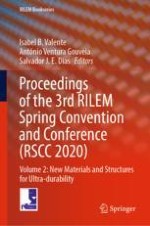2021 | OriginalPaper | Chapter
Magnesium-Phosphate Cement Pastes to Encapsulate Industrial Waste Powders
Authors : Matthieu De Campos, Catherine A. Davy, Murielle Rivenet, Justo Garcia
Published in: Proceedings of the 3rd RILEM Spring Convention and Conference (RSCC 2020)
Publisher: Springer International Publishing
Activate our intelligent search to find suitable subject content or patents.
Select sections of text to find matching patents with Artificial Intelligence. powered by
Select sections of text to find additional relevant content using AI-assisted search. powered by
